Last-Minute NYC Holiday Gift Guide 🎁
We’ve created a holiday gift guide with presents for the intrepid New Yorker that should arrive just in time—


Covering three blocks and nestled among the skyscrapers of most southern tip of Manhattan, where Broadway meets Whitehall and State Streets, stands the Alexander Hamilton US Custom House. The 45,000 square foot, seven story monument was designed so its size and richness conveyed the greatness of New York as well as the United States. This National Historic Landmark is rich in architectural and historic significance and since October 1994 has been home to the Smithsonian’s National Museum of the American Indian.
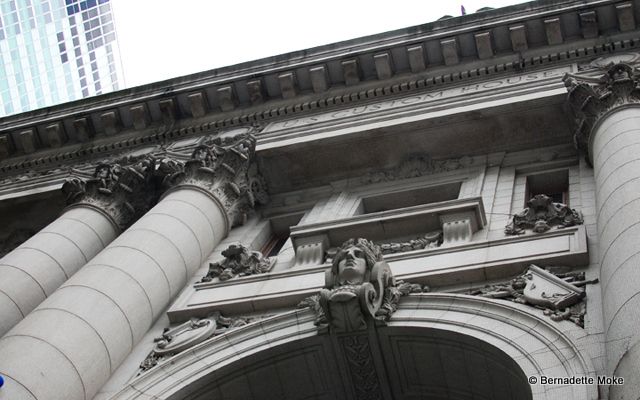
Smithsonian’s National Museum of the American Indian, New York City
In 1899, twenty architects were invited by the US Treasury to submit designs for a new Custom House. The young Cass Gilbert’s Beaux Arts design was chosen. He felt that a public building should reveal the “imponderable elements of life and character.” Working with other artists and craftsmen, the building was constructed between 1900 and 1907. When the customs offices were moved to 6 World Trade Center in the mid-1970s, the building fell into disuse and disrepair. Senator Daniel Patrick Moynihan saved the building from demolition in 1979 and spurred its preservation.
Forty-four columns around the exterior are each adorned with a head of Mercury, the Roman god of commerce. Sitting on pedestals along the main facade are four large sculptures. These female figures, each representing the four major continents, America, Asia, Europe and Africa were created by Daniel Chester French. Above each of the twelve columns on the main facade are heroic statues representing the sea powers of Europe and the Mediterranean. Keystones above the main floor windows are sculpted heads symbolizing the races of humanity. Presiding over the building’s main entrance is a giant cartouche depicting the shield of the United States, with a serene head of Columbia, sculpted by Vincenzo Alfano in 1903.
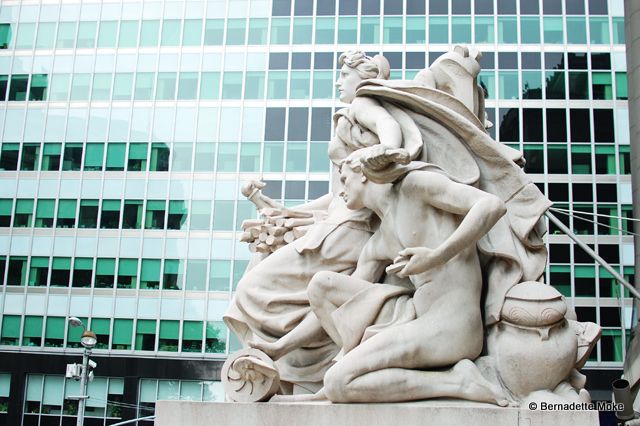
Statue depicting America to the left of the main entrance
Walking through the second floor entrance is a humbling experience. The two-story-high hall is a cathedral of commerce, finished in marble with vaulted ceilings intricately painted gold and blue. At either end of the great hall are spiral staircases rising to the top floor and bathed in light from the skylight, seven lofty stories above.
But the most awe inspiring feature of the ground floor is the rotunda. It spans an impressive 135 feet long and 85 feet wide. The ceiling of the rotunda is graced by a delicate oval skylight. The 140-ton skylight was designed by Spanish engineer Guastavino and doesn’t use a single ounce of steel and has no visible supports. Circling the skylight are sixteen frescos delicately painted by Reginald March in 1937. The smaller paintings depict great early explorers of America, and the larger areas trace the course of a ship as it enters the New York harbor. A work of art in its own right, the rotunda of the custom house is flanked on three sides by the museum’s main exhibition galleries.
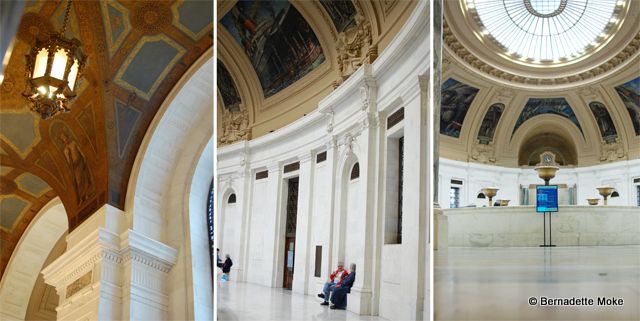
(left) Ceiling in the great hall (center) Frescos in the rotunda (right) Rotunda and skylight
Shells, marine creatures and sea symbolism are repeated throughout the building, even hidden in the trim and in the coat room. This decor might seem odd at first, but they are as a reminder and a tribute to New York’s preeminence as the country’s most prosperous trade center, the Port of New York.
Off the great hall is the cashier’s office, once used to collect import and export taxes, is now a resource center, a place to collect information instead of money. The resources are available to everyone from researching school assignments to wanting to learn about their American Indian genealogy. Learning about the indigenous people of the Western Hemisphere is part of the elementary curriculum in the tri-state area, so the room is especially geared towards the 600 children that visit every day. They come to the research center and through books and hands-on discovery boxes they learn about all aspects of life for the tribes that used to live in the area.
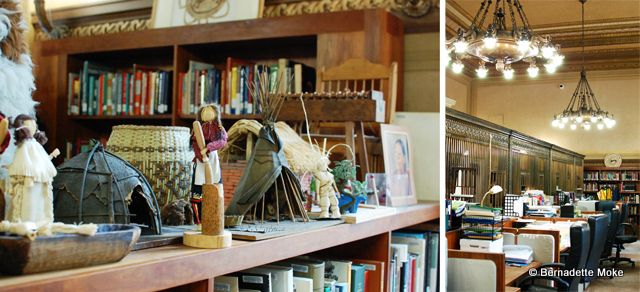 Former cashier’s office now resource center
Former cashier’s office now resource center
Down the hall is the Haudenosaunee Discovery Room. It is a unique collaboration between the Resource Center and the museum’s Education Office, is a hands-on discovery room for children for learning about the Haudenosaunee (Iroquois) people. With funds from Partners in Preservation, The Smithsonian National Museum of the American Indian is looking to restore and update the screening room and update and expand the children’s resource rooms which are currently in makeshift spaces. The museum and the kids need your vote.
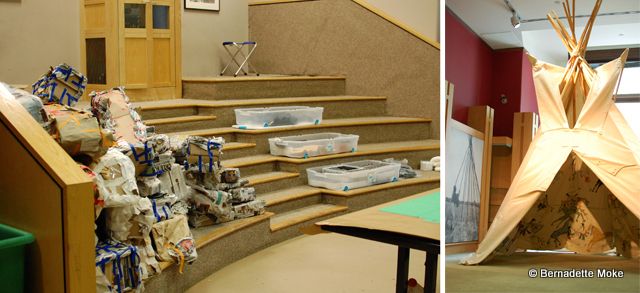 (left) Orientation Center (right) Replica tipi in the resource room currently in the old gift shop
(left) Orientation Center (right) Replica tipi in the resource room currently in the old gift shop
Also located on the lower level is the newly renovated Diker Pavilion for Native Arts and Cultures. The 6,000 square foot elliptical space hosts performances, large discussions and dancing. Around the perimeter of the room are floor to ceiling glass display cases for traveling exhibits. A computer center is hidden behind one of the wood wall panels during performances, but rolled out for research when the room isn’t in use.
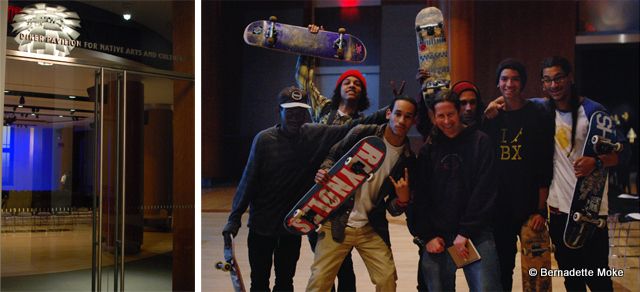 (left) Outside the Diker Pavilion (right) Young skateboarders with Lenape and professional skateboarder Jim Murphy after a screening of Skateboard Nation
(left) Outside the Diker Pavilion (right) Young skateboarders with Lenape and professional skateboarder Jim Murphy after a screening of Skateboard Nation
This building has truly come full circle. First as a public center of trade, now the museum is back in the hands of the public. Please help the museum advance knowledge and understanding of the Native cultures of the Western Hemisphere–past, present, and future–through partnership with Native Americans and others. The museum works to support the continuance of culture, traditional values, and transitions in contemporary Native life. JFK once said, “Children are the world’s most valuable resource and its best hope for the future” and the Smithsonian National Museum of the American Indian does just that.
Click here to vote for the Smithsonian National Museum of the American Indian, and find out more about the Smithsonian National Museum of the American Indian @AmerIndianNYC and Facebook. Follow Untapped Cities on Twitter and Facebook. Get in touch with the author @BMoke28.
Untapped Cities is an official blog ambassador for Partners in Preservation , a community-based initiative by American Express and the National Trust for Historic Preservation to raise awareness of the importance of historic places. Stay up-to-date with Untapped’s coverage of all 40 sites by following our Partners in Preservation category.
Subscribe to our newsletter